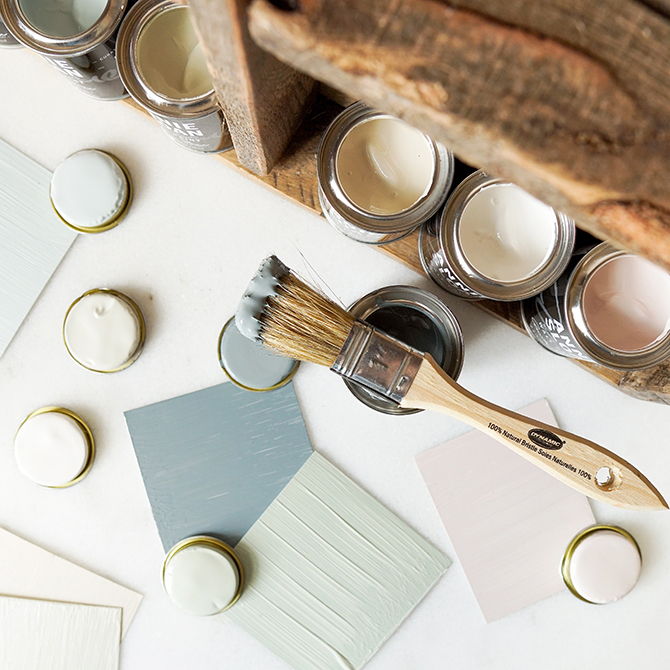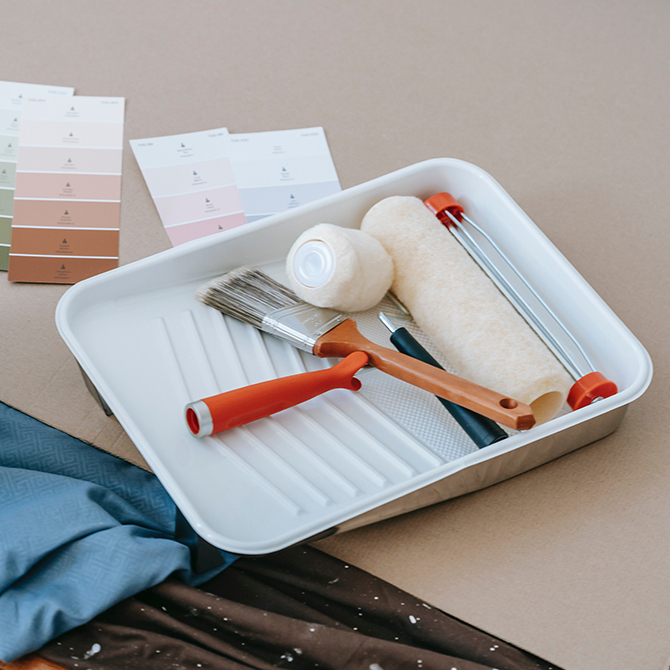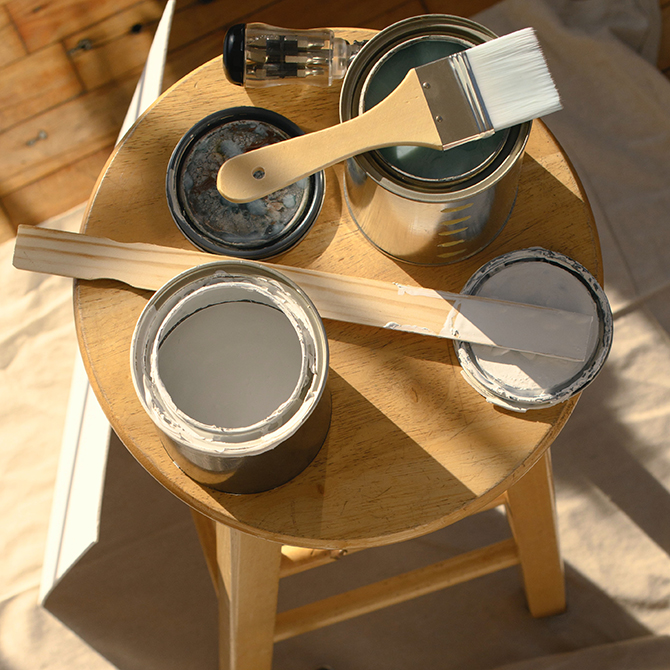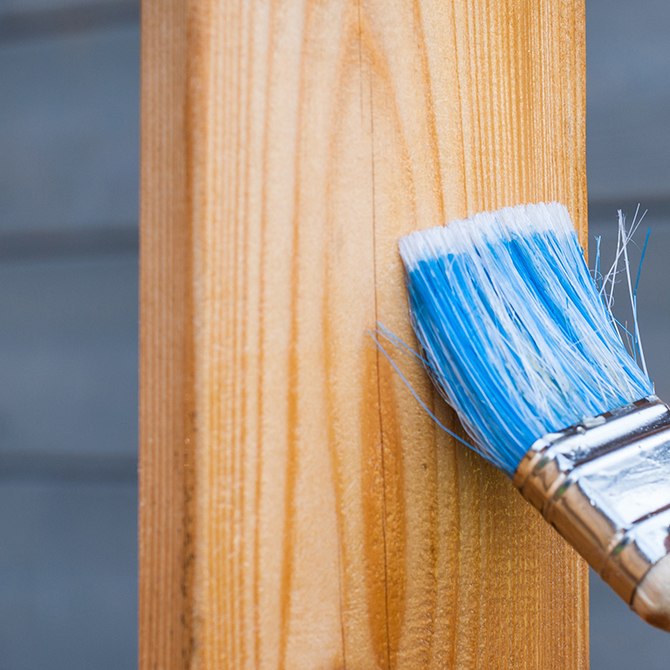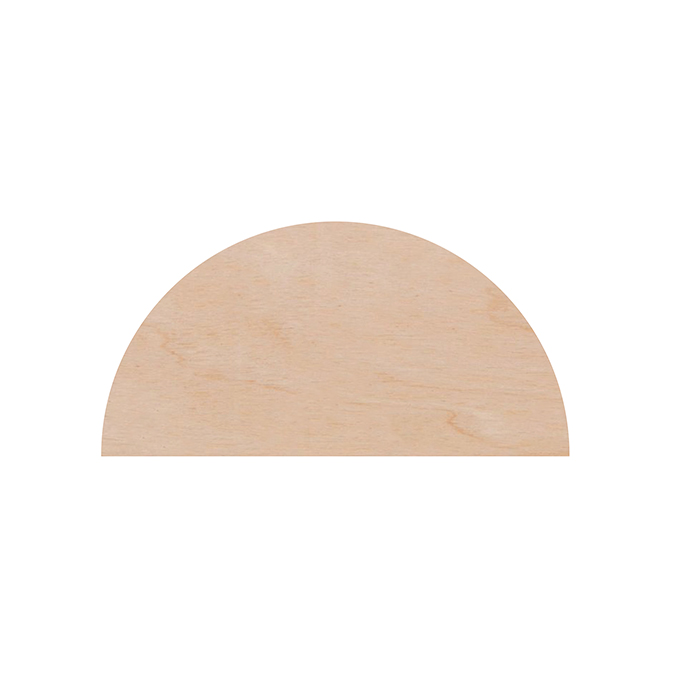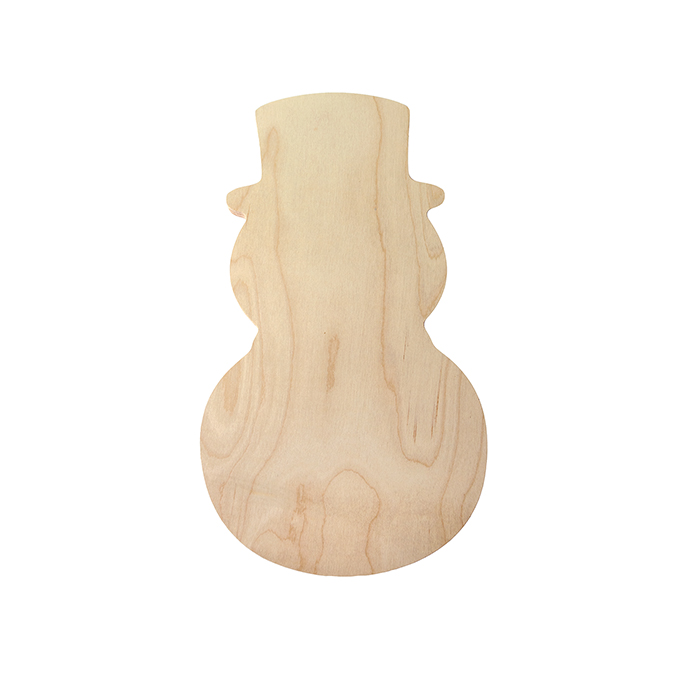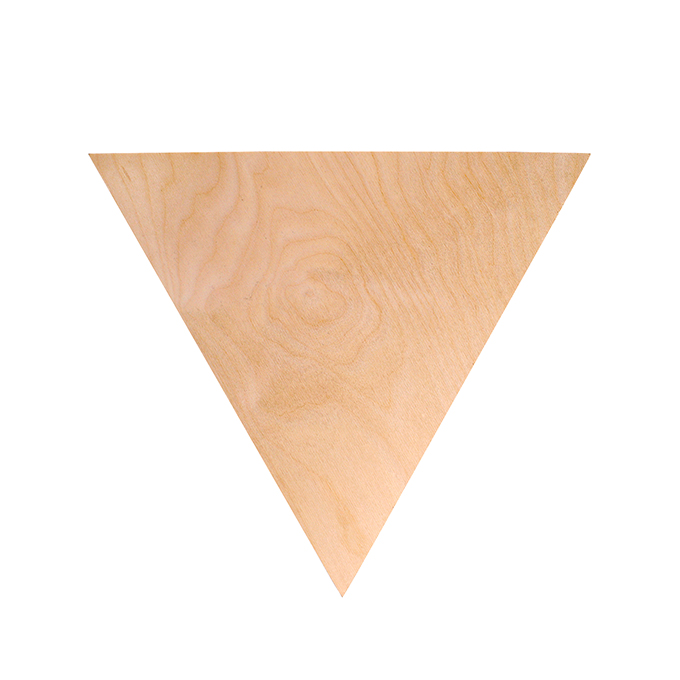
What is Gesso + Why your Unfinished Wood Wants It
Posted by The Handprint Team
Makers who enjoy creating painted wood projects often share a secret. They start with a well-known fine arts supply called gesso. Pronounced " jesso ," it's a mixture of white pigment, acrylic resin, and chalk used to prime wood surfaces and other materials for paint. It dries hard -- preventing paint from soaking into unfinished wood -- and creates a ready-to-finish surface.
One reason gesso is so popular is how simple it is to use. Use it in any thickness that suits your project, but if you want a smooth surface for painting, start with a "heavy cream" consistency. Anything thicker risks leaving brush strokes.
Prep your wood by sanding with 200+ fine-grit sandpaper. Remove dust with a tack cloth, then apply 2-3 coats of gesso with a smooth-nap roller or a spray. For an even smoother surface, lightly sand between each coat, allowing each to dry for at least 24 hours. If you try to sand too soon, gesso will roll up into gummy little balls.
You'll also find that some brands leave a more textured surface while others dry smooth.
Some you'll need to thin with a little water while others are perfect straight out of the container.
Our favorite? Gesso in a spray can.
Experiment with different brands and application methods, then stick with the ones you like best.
In conclusion
Consider experimenting with gesso as the primer for your next painted wood project. You might discover an incredible new trick to tuck up your maker-sleeve and open a whole new realm of creative possibilities.
Tips:
When buying gesso, student-grade is less expensive. It's thinner and more transparent than artist-grade, but it's perfect for most makers who want to apply multiple coats anyway. And while this grade is typically available only in white, you can tint it with acrylic paint if desired.
